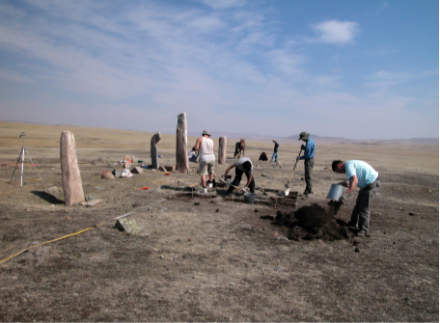Researchers at a deer stone excavation site dating to 1000 B.C.E., 2005
Bor Hujiriin Gol, Mongolia
Photograph by William Fitzhugh
Since the 1980s, a team of Mongolian and Smithsonian scientists and researchers have been excavating, scanning, and cataloguing deer stones—named for their carved figures of flying deer—across northern Mongolia. The project supports the Dukha, or Tsaatan, reindeer-herding communities and investigates how climate change is threatening their nomadic traditions and Mongolia’s archaeological sites.
Smithsonian Institution





